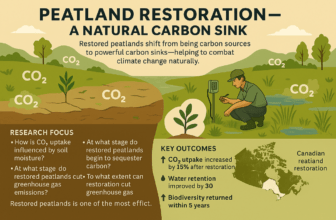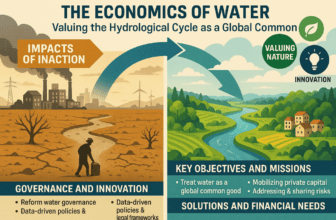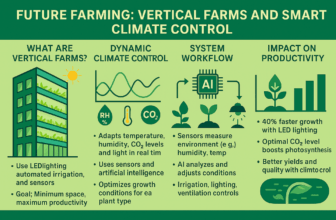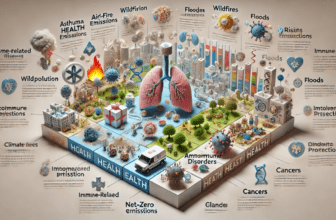Comprehensive Analysis of Climate Change Mitigation: Goals, Conflicts, and Investments
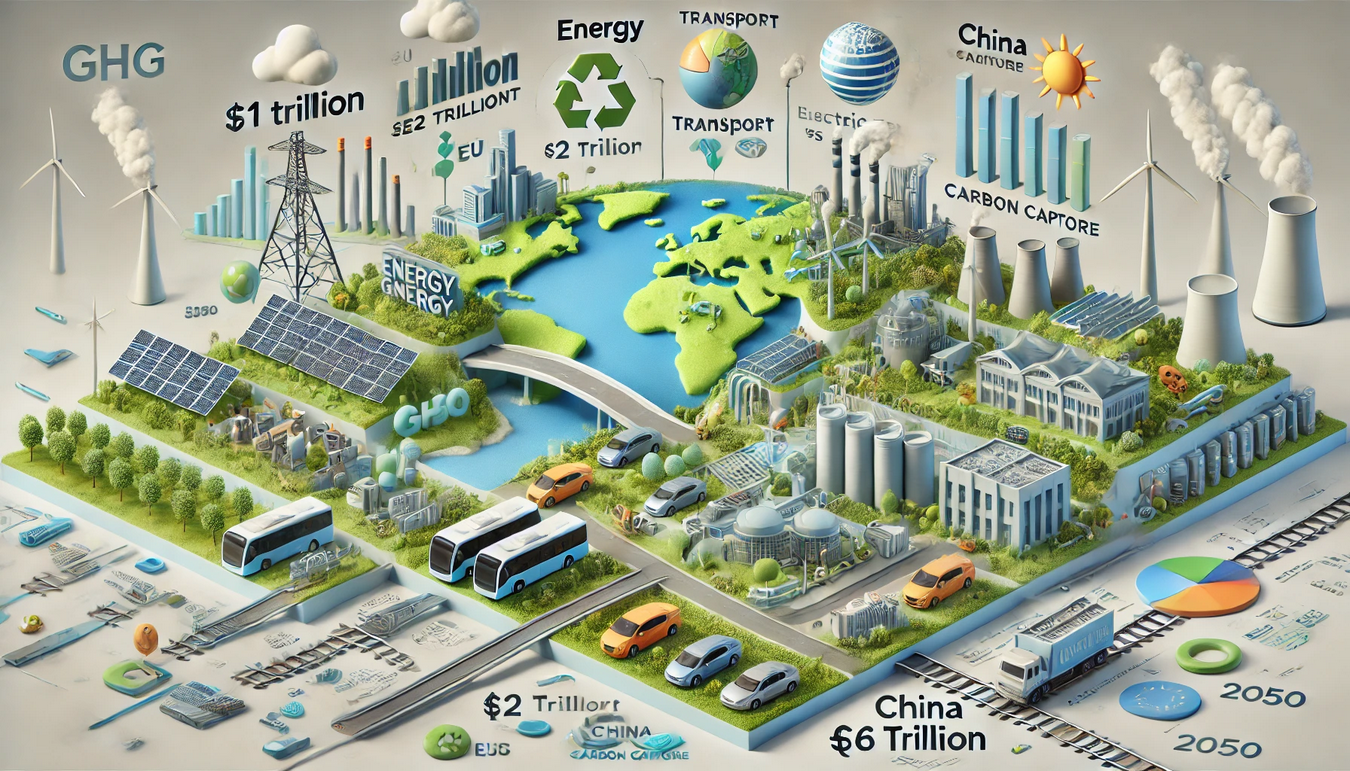
The document under review presents an extensive analysis of greenhouse gas (GHG) emission reduction goals, the inherent contradictions between different regions and sectors, and the significant investments required to combat climate change effectively. This post delves deeply into all the key aspects of climate action, including emission reduction goals, carbon neutrality targets, sectoral strategies, contradictions, and the substantial financial investments needed to achieve global climate goals. Additionally, it addresses the socio-economic and political challenges that arise from the implementation of these strategies, highlighting both the opportunities and obstacles that exist in transitioning to a sustainable future.
1. Carbon Reduction Goals and Investments
Carbon reduction goals are at the core of global climate mitigation strategies. These goals typically aim to reduce GHG emissions by a certain percentage within a defined timeframe. The overarching objective for many countries and cities is to achieve carbon neutrality by mid-century, aligning with the global effort to limit temperature rise to 1.5°C as per the Paris Agreement. However, the goals differ significantly between developed and developing nations due to disparities in economic development, historical emission levels, and differing priorities for growth and sustainability.
Key Carbon Reduction Goals
- European Union (EU): The EU aims to reduce GHG emissions by 55% by 2030 compared to 1990 levels and achieve carbon neutrality by 2050. This requires significant changes in energy production, industry, transport, and agriculture, which presents a range of technical and socio-economic challenges. The EU’s goals are among the most ambitious globally, and achieving them will require deep structural changes across all sectors.
- United States: The U.S. has committed to reducing emissions by 50-52% by 2030 relative to 2005 levels and achieving net-zero emissions by 2050. The Biden administration has outlined a roadmap focusing on clean energy, electrification, and innovation in key technologies, while also emphasizing the need for climate resilience, social equity, and the creation of green jobs.
- China: China, as the world’s largest emitter, has set a target to peak its emissions by 2030 and achieve carbon neutrality by 2060. The goal is to reduce carbon intensity (emissions per unit of GDP) by 65% from 2005 levels by 2030. China’s plan involves massive investments in renewable energy, infrastructure, and research into clean technologies while balancing the need to sustain economic growth.
- Copenhagen, Denmark: Copenhagen has one of the most ambitious goals globally, aiming to become carbon-neutral by 2025, primarily through renewable energy expansion and energy efficiency measures. The city focuses heavily on cycling infrastructure, smart grids, and green public transport, setting a benchmark for urban areas around the world in pursuing rapid decarbonization.
Investment Requirements
- European Union: To meet its 2030 and 2050 goals, the EU estimates it will need to invest €1 trillion in renewable energy, energy efficiency, and sustainable infrastructure over the next decade. This funding is critical for upgrading energy grids, supporting green industries, and encouraging technological innovation across member states.
- United States: The U.S. is expected to invest $2 trillion in the next 10 years to upgrade energy infrastructure, expand renewable energy, and decarbonize the transport sector. This investment is expected to not only drive emission reductions but also stimulate economic growth by creating millions of green jobs and revitalizing the nation’s infrastructure.
- China: To meet its 2060 carbon neutrality goal, China will require an estimated $6 trillion in investments in renewable energy, carbon capture technologies, and electrification of transport and industry. The Chinese government is focusing on scaling up wind and solar energy, developing advanced battery technology, and implementing carbon capture and storage (CCS) solutions to reduce industrial emissions.
- Copenhagen: The city of Copenhagen has allocated approximately €1.2 billion in investments by 2025, focusing on renewable energy, green infrastructure, and electrification of transport. The city aims to demonstrate how urban environments can play a pivotal role in combating climate change through ambitious local-level initiatives.
Contradictions and Challenges
- Developed vs. Developing Nations: One of the most prominent contradictions is the divide between developed nations, which focus on absolute carbon reductions, and developing countries, which focus on carbon intensity reductions. Developing nations like China and India argue that their economic growth necessitates continued reliance on fossil fuels, while developed countries like the U.S. and the EU advocate for rapid decarbonization. This tension complicates global climate negotiations and raises questions about fairness and equity in climate action.
- Historical Responsibility: Developed nations have historically contributed more to global emissions, leading developing countries to demand greater financial and technological support to achieve their climate goals. This tension complicates international negotiations and efforts to agree on global targets, as developing nations emphasize the principle of “common but differentiated responsibilities.” The lack of adequate financial support and technology transfer remains a major stumbling block in bridging this gap.
2. Carbon Neutrality Goals and Investments
Carbon neutrality, or net-zero emissions, means that a city or nation balances its carbon emissions with carbon removal or offsetting efforts, such as reforestation or carbon capture technologies. Carbon neutrality is a key global target for mitigating climate change, with most countries aiming to achieve it by 2050. However, some cities and regions aim for earlier targets, signaling a leadership role in climate action.
Key Carbon Neutrality Goals
- European Union: The EU aims for carbon neutrality by 2050, incorporating a broad strategy that includes renewable energy expansion, carbon pricing, and strict emissions standards across sectors. The Green Deal is central to these efforts, emphasizing the importance of a sustainable economic transition that leaves no one behind.
- United Kingdom: The UK has committed to net-zero emissions by 2050, focusing on decarbonizing energy production, transport, and heating. The UK’s approach includes ambitious policies like phasing out internal combustion engine vehicles by 2030 and investing heavily in offshore wind capacity, alongside significant investment in green hydrogen and energy storage technologies.
- Copenhagen: Copenhagen aims to be carbon neutral by 2025, largely through renewable energy, waste management reforms, and electrifying transport. Copenhagen’s comprehensive plan also includes urban greening initiatives, widespread cycling infrastructure, and the use of district heating systems to reduce the reliance on fossil fuels.
- China: China’s goal is to reach carbon neutrality by 2060, with an intermediate goal of peaking emissions by 2030. This strategy is highly dependent on the development and deployment of new technologies such as CCS, hydrogen production, and electrification of industry and transport. The challenge for China is balancing the demands of rapid economic growth with environmental sustainability.
Investment Requirements
- United Kingdom: Achieving net zero by 2050 will require an estimated £1.3 trillion in investments over the next 30 years, particularly in energy infrastructure, housing, and electric transport. Investments are also needed in renewable power generation, upgrading grid infrastructure, and retrofitting millions of homes for improved energy efficiency.
- China: China’s carbon neutrality target by 2060 is expected to require over $6 trillion in investments, with a focus on renewable energy expansion, energy efficiency, and advancements in carbon capture and storage. The country has also committed to developing a large-scale hydrogen economy, which could play a crucial role in reducing industrial emissions.
- Copenhagen: Copenhagen’s transition to carbon neutrality by 2025 has required significant investments, totaling over €1.2 billion, in renewable energy, cycling infrastructure, and smart grids. The city’s integrated approach to energy production, urban planning, and green mobility serves as a model for other cities looking to achieve similar goals.
Contradictions and Challenges
- Carbon Offsetting and Removal Technologies: A significant challenge in achieving carbon neutrality is the reliance on carbon offsetting and removal technologies, which remain costly and are not yet deployed at scale. There are also debates about the effectiveness of forest carbon sequestration and the risk of over-reliance on these methods to avoid direct emission reductions. Many environmental advocates argue for a greater focus on reducing emissions at the source rather than relying on offsetting mechanisms that may not provide permanent carbon removal.
- Energy System Transformation: Achieving carbon neutrality requires a complete transformation of energy systems, moving away from fossil fuels to 100% renewable energy. This transition poses challenges in terms of energy storage, grid stability, and the economic cost of transitioning industries like steel and cement. Developing reliable storage solutions and flexible grid systems are critical to ensuring the continuous supply of renewable power.
3. Sectoral Goals and Investments
Sectoral goals focus on reducing emissions within specific sectors such as energy, transport, industry, and buildings. Each sector faces unique challenges and opportunities in decarbonization, and achieving climate goals will require sector-specific strategies and investments that recognize the diverse technological and economic needs of each sector.
Key Sectoral Goals
- Energy Sector: The EU aims for 40% renewable energy by 2030, with the ultimate goal of 100% clean energy by 2050. The U.S. aims to decarbonize its power sector by 2035, with 100% clean electricity. This requires massive investments in solar, wind, and nuclear power, as well as energy storage and grid upgrades. Renewable energy expansion also involves decentralized energy generation and smart grid integration to optimize power distribution.
- Transport Sector: Cities like Los Angeles and London plan to fully electrify public transport by 2030. This includes transitioning to electric buses, electric vehicle (EV) charging infrastructure, and encouraging the use of electric cars. Additionally, the development of active transportation infrastructure, such as bike lanes and pedestrian-friendly urban spaces, is key to reducing emissions from the transport sector.
- Buildings: The EU aims to renovate 3% of its building stock annually to improve energy efficiency, while cities like Vancouver have ambitious targets to make all new buildings net-zero energy by 2030. The building sector is crucial for emissions reduction, given that a significant portion of energy consumption occurs in residential and commercial buildings. Deep energy retrofits and the adoption of low-carbon heating solutions are necessary for meaningful progress.
Investment Requirements
- Energy Sector: The EU requires €350 billion annually in investments to meet its renewable energy targets, including upgrades to electricity grids and the expansion of solar and wind power. Investments are also needed for research and development into emerging technologies such as green hydrogen and energy storage solutions.
- Transport Sector: Los Angeles plans to invest $1.2 billion by 2030 in electrifying its bus fleet and expanding EV infrastructure. The success of transport decarbonization depends not only on public investments but also on incentives for private sector innovation and adoption of electric vehicles, as well as consumer behavior shifts toward greener transport options.
- Buildings: The EU estimates it will need to invest €250 billion annually in energy efficiency renovations and the transition to low-carbon heating systems. This includes significant funding for the installation of heat pumps, solar water heating systems, and improving building insulation to drastically reduce energy demand.
Contradictions and Challenges
- Sectors with High Emissions: The industrial sector, particularly steel, cement, and chemicals, is one of the hardest to decarbonize due to its reliance on high-temperature processes and fossil fuels. Achieving deep emission cuts in these sectors requires breakthroughs in clean technology, such as hydrogen fuel and carbon capture and storage (CCS). Collaborative efforts across nations are essential to share knowledge and scale technologies that could make these sectors more sustainable.
- Disparities Between Sectors: Some sectors, like energy and transport, are progressing faster in decarbonization due to technological advancements, while other sectors, such as agriculture and heavy industry, lag behind. This creates uneven progress toward overall climate goals and raises questions about how to equitably distribute resources and incentives across different sectors to ensure a balanced approach.
4. Technological and Economic Contradictions
The global shift toward carbon neutrality and emission reductions presents several technological and economic contradictions, particularly regarding energy transitions and economic stability in fossil fuel-dependent regions. These contradictions highlight the complexities involved in transitioning to a low-carbon economy while maintaining economic growth and social equity.
Key Contradictions
- Fossil Fuel Dependency: Many countries, particularly developing nations like India and Indonesia, rely heavily on coal and other fossil fuels for economic development and energy security. Transitioning away from these energy sources could result in economic instability and job losses in key industries. This underscores the need for carefully managed transitions that provide economic alternatives for communities reliant on fossil fuel industries.
- Technology Gaps: The deployment of renewable energy technologies and energy storage systems is uneven across the world. Developed nations like Germany and the U.S. have made significant investments in renewable energy infrastructure, but many developing nations lack the financial and technological resources to implement such changes at scale. Bridging this technology gap requires international cooperation, financing mechanisms, and capacity-building efforts to ensure that all countries can participate in and benefit from the energy transition.
- Just Transition: The concept of a “just transition” aims to ensure that the shift to a low-carbon economy does not disproportionately harm workers and communities in fossil fuel industries. This requires targeted investments in retraining programs, social support systems, and the development of new economic opportunities, particularly in regions reliant on coal, oil, and gas extraction. Ensuring a just transition is critical for gaining public and political support for ambitious climate policies and mitigating the socio-economic impacts of decarbonization.
Investment Requirements for a Just Transition
- Global Scale: It is estimated that a just transition will require at least $1 trillion globally to support displaced workers, provide retraining, and develop new industries in fossil fuel-dependent regions. This funding is essential to support vulnerable communities and ensure that the benefits of a low-carbon economy are shared equitably across society.
- European Union: The EU’s Just Transition Mechanism has allocated €100 billion to support regions most affected by the transition to a low-carbon economy, particularly in coal-dependent areas like Poland and Romania. These funds are aimed at fostering new industries, supporting innovation, and ensuring social cohesion during the transition.
Conclusion
The document highlights the ambitious climate change mitigation goals that have been set at global, national, and city levels. These goals include achieving carbon neutrality by 2050, reducing carbon intensity in developing economies, and setting sectoral targets for energy, transport, and industry. However, these goals face numerous contradictions, particularly between developed and developing nations, regarding historical responsibility and economic growth. Additionally, the financial investments required to achieve these goals are enormous, with estimates ranging from $1 trillion to $6 trillion for individual countries and sectors. To overcome these challenges, it is crucial to foster international cooperation, ensure equitable transitions, and make strategic investments in clean technology, infrastructure, and social support systems. Furthermore, building political will and social acceptance is essential for achieving the transformative changes needed to address climate change effectively. This involves not only technological advancements but also a commitment to equity and justice, ensuring that all regions and communities can transition to a sustainable future without being left behind.






